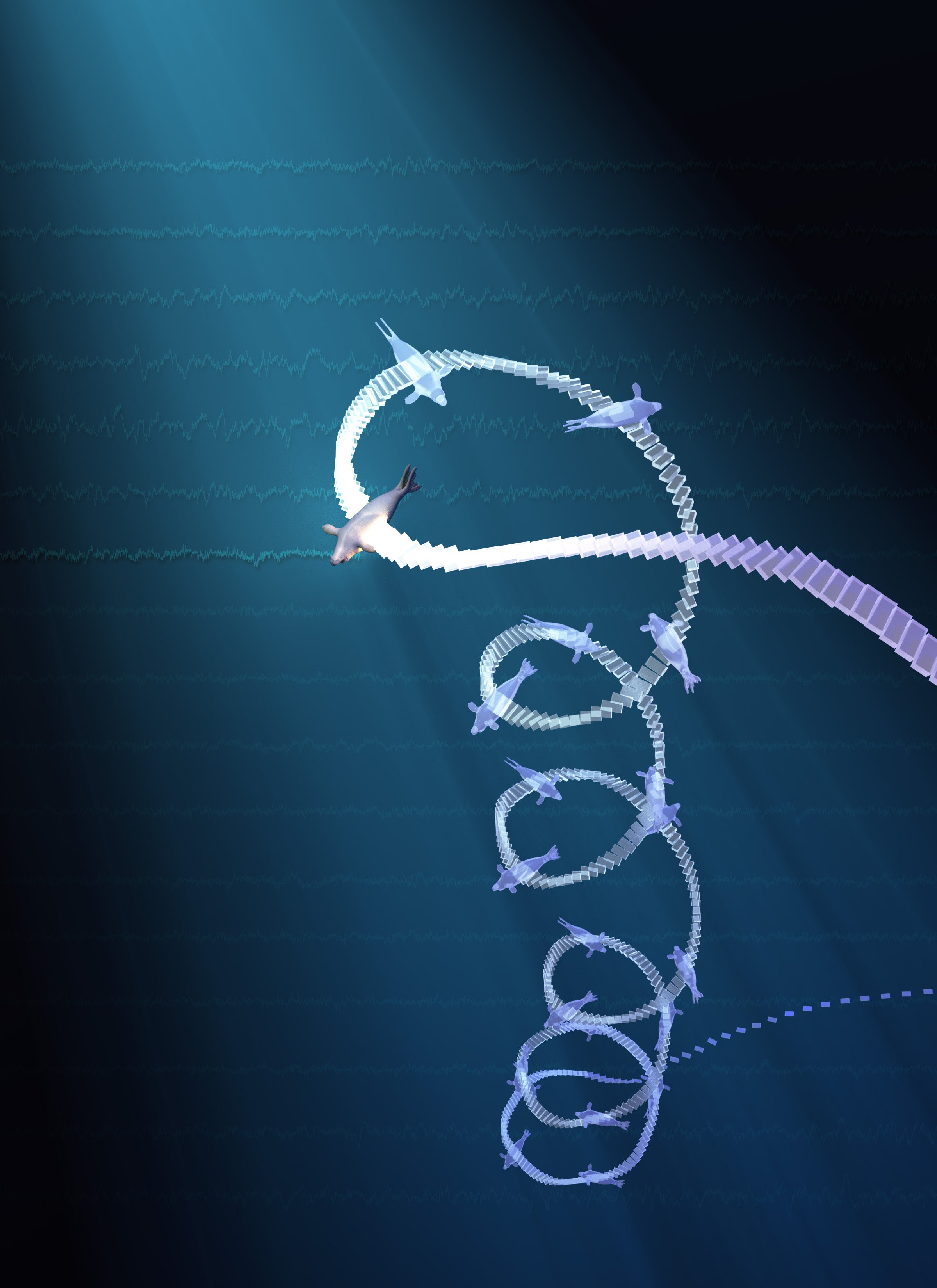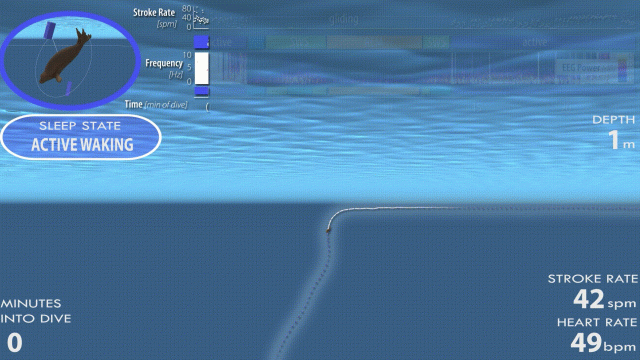A team of scientists recorded the brain activity of diving elephant seals in the wild and mapped out the eccentric treks the animals take when they sleep mid-dive.
Exactly when and where elephant seals sleep in the open ocean has been a mystery; the animals will forage at sea for months at a time, so sleeping has to occur at some point. Researchers now think they have the answer, which they describe in a study published today in Science.
Elephant seals generally dive to between 1,000 and 609.60 m beneath the surface, but they’ve been documented diving to nearly 1,737.36 m, according to the California Department of Parks and Recreation. They sleep a lot while on land — over 10 hours per day. But the animals average a paltry two hours of sleep per day on their at-sea sojourns, according to a University of California-Santa Cruz release about the new research.
The seals need to rest at some point on their open-ocean trips, while minimising their exposure to their natural predators, sharks and orcas, to which they’re most vulnerable on the ocean’s surface.
It turns out the seals get their shut-eye during half-hour dives, sleeping about 10 minutes at a time.

“We think that the seals are passively drifting during this time and that the corkscrew/spiral pattern is a hydrodynamic result of a falling object in water — much like how a falling leaf pitches up and down as it spins in a spiral,” said Jessie Kendall-Bar, an evolutionary biologist at the Scripps Institution of Oceanography and the study’s lead author, in an email to Gizmodo.
“While in slow-wave sleep, they are able to maintain postural control and do seem to generally maintain a heading and glide down in a straight line, but sometimes they also turn upside down during slow-wave sleep and begin to spiral,” Kendall-Bar added.
Kendall-Bar designed an electroencephalogram (EEG) system that could record the seals even at depths in the open water, as well as devices that recorded the seals’ positioning and speed over the course of their trips.
The team found the seals entered rapid-eye movement (REM) sleep only when they corkscrewed through the water. They believe this was due to the seals entering a state of sleep paralysis when they went into REM sleep, causing them to take on a different pattern of movement.
It’s strange to imagine these huge creatures, which can be so ungainly on land, moving so gracefully while in a deep submarine slumbers. But it’s further evidence of how cool nature is and how much researchers have yet to learn.
More: Wild Grey Seals Clap Their Flippers Underwater to Communicate, New Research Suggests
